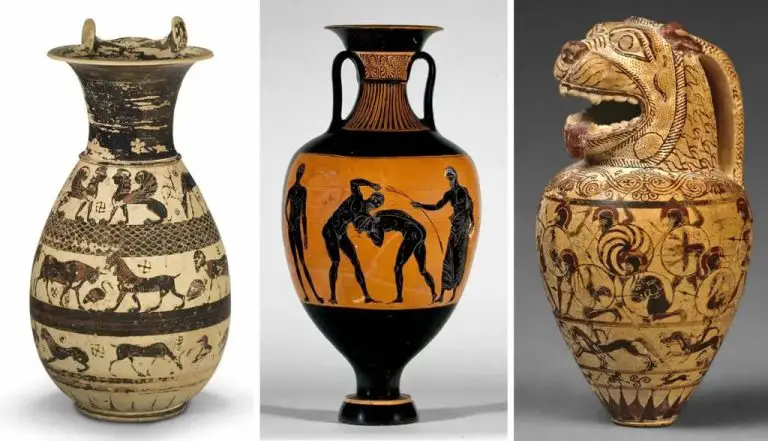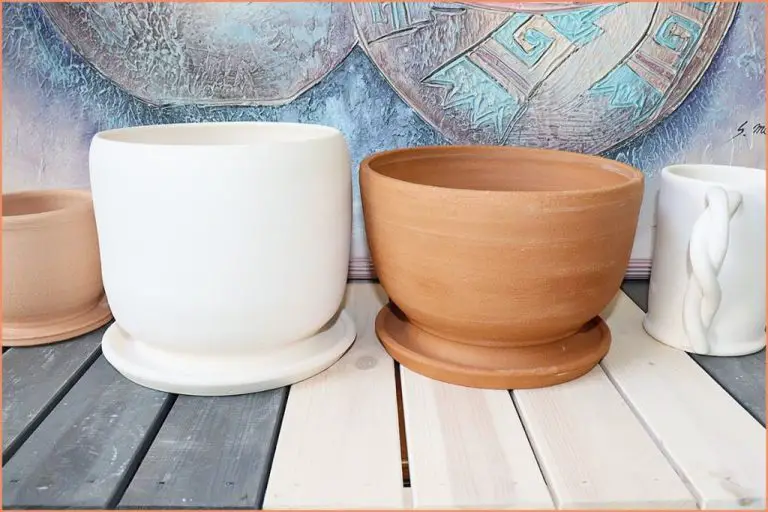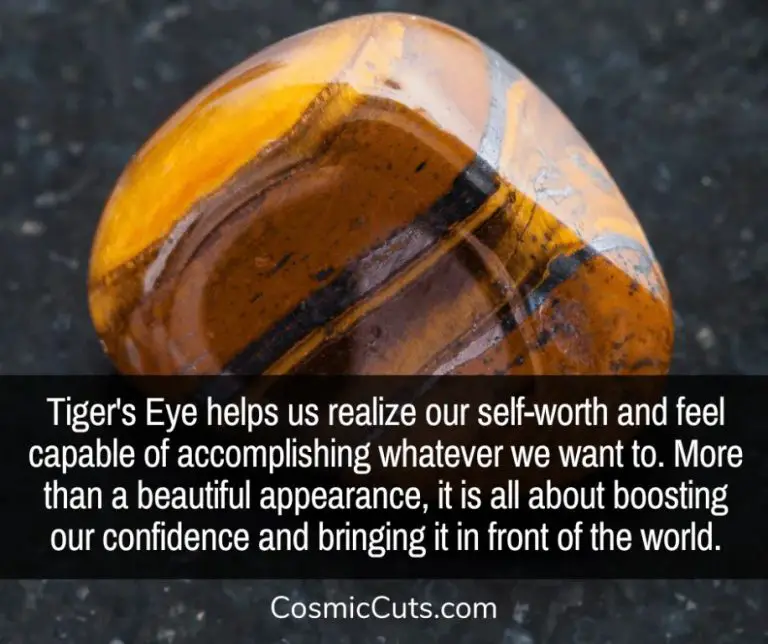What Kind Of Clay Do You Use For Christmas Decorations?
With the winter holidays approaching, many people begin thinking about decorations and crafts to spruce up their homes. One fun and creative way to make homemade decorations is with clay. From ornaments to decorative figurines, clay is a versatile material that allows crafters to shape and mold various festive decorations. The sculptural nature of clay provides a handmade, personal touch to holiday decor. In addition, clay decorations make great gifts and are a fun project for both kids and adults.
There are several types of clay that work well for Christmas or winter-themed decorations. Polymer clay, air-dry clay, and modeling clay are among the most popular options. Each type has different properties to consider when deciding what is best for a particular project. Factors like durability, baking requirements, texture, and detail capability should be weighed. With an array of colors and finishes to choose from, crafters can create simple or elaborate clay decorations to display throughout the holiday season.
Types of Clay
There are three main types of clay that work well for making Christmas decorations:
Polymer Clay
Polymer clay is made from PVC resin and plasticizers. It is very versatile and easy to work with. Polymer clay can be shaped, molded, sculpted, and textured. It doesn’t dry out when exposed to air like other clays. Instead, it must be baked in the oven to harden it. Polymer clay comes in a wide variety of colors and effects like metallic, pearl, translucent, and more. Popular brands are Sculpey and Fimo.
Air-Dry Clay
Air-dry clay is made from natural materials like clay and cellulose. It air dries to a hard, durable finish in 24-48 hours without needing to bake it. Air-dry clay can be painted once fully dried. It’s inexpensive and readily available. Some common air-dry clay brands are Crayola Air Dry Clay and Activ-Clay.
Modeling Clay
Modeling clay is made of water-based clay that never fully dries out. It stays malleable so you can continually rework your creations. Modeling clay is non-toxic and easy for kids to use. However, decorations made from modeling clay will not harden on their own. Popular modeling clay brands include Play-Doh and Model Magic.
Polymer Clay
Polymer clay is one of the most popular choices for making Christmas decorations. It is made from PVC resin and comes in a wide range of colors. Here are some of the pros and cons of using polymer clay:
Pros:
- Extremely versatile – can be shaped, sculpted, molded, etc.
- Holds fine detail very well
- Available in many colors, finishes, and effects
- Does not dry out when exposed to air like some clays
- Can bake clay creations in a regular oven to harden them
- Very durable once baked
Cons:
- Need to bake pieces in the oven to harden them
- Not recommended for very young kids due to small detached pieces
Some popular brands of polymer clay include Sculpey, Fimo, Premo, and Cernit. Each brand has slightly different properties when it comes to texture, finish, and baking. Polymer clays need to be baked according to package directions, typically for 15-30 minutes at 275°F. The baking makes the clay hard and durable. Decorations made from polymer clay will last for many years if stored properly.
Air-Dry Clay
Air-dry clay is a popular choice for making Christmas decorations. It is easy to work with and dries at room temperature without needing to be baked. Here are some of the main pros and cons of using air-dry clay for Christmas decorations:
Pros:
- Air-dries at room temperature, no baking required
- Very easy to work with and reshape
- Lightweight when dry
- Variety of colors available
- Affordable and accessible
Cons:
- Can take 1-3 days to fully dry depending on thickness
- Not as durable as polymer clay or ceramic clays
- May chip or crack if very thin
- Surface can scratch or scuff over time
- Not waterproof
Some popular brands of air-dry clay include Crayola Model Magic, ACTIVA Air-Dry Clay, and Makins Clay. These all dry within 24-72 hours under normal conditions. The clay remains workable until it air dries completely. Smaller pieces will dry faster than larger sculptures or thick pieces.
When fully dried, air-dry clay decorations are relatively durable if handled carefully. They may not last multiple seasons if exposed to moisture or dramatic temperature changes. Storing them inside a protective case is recommended.
Modeling Clay
Modeling clay is one of the most popular types of clay for making Christmas decorations. Unlike polymer clay and air-dry clay, modeling clay never fully dries out. This makes it very malleable and easy to reshape over and over again. Some of the key pros and cons of using modeling clay for Christmas decorations include:
Pros:
- Stays soft – it never fully dries, so it can be continually reused and reshaped
- Very malleable and easy to sculpt detailed shapes
- Relatively inexpensive compared to other clays
- Available in many colors
Cons:
- Pieces may become misshapen or damaged over time since modeling clay remains soft
- Clay can dry out and harden if not stored properly in an airtight container
- Not as durable as air-dry or polymer clays
Popular and widely available brands of modeling clay include Crayola Model Magic, Sargent Art, and Sculpey. When using modeling clay for Christmas decorations, it’s best to display the pieces in areas where they won’t get bumped or damaged. And be sure to store any unused clay in an airtight bag or container to prevent drying.
Clay Properties
The properties of clay determine how it handles and what types of decorations can be made. Key properties to consider are:
Color
Clays come in a wide variety of colors. Polymer clays can be mixed and blended to create custom colors. Air-dry and modeling clays typically come in basic colors like white, terra cotta, and gray. The color possibilities are endless.
Texture
Clay texture ranges from smooth to coarse. Polymer clays tend to be smooth and easy to condition. Air-dry clays can have some grittyness. Modeling clays are flexible but have an earthier, coarser feel.
Flexibility
The flexibility and malleability of clay determines what forms can be sculpted. Polymer clays hold fine detail but can be brittle if thin. Air-dry clays are initially flexible but harden when dry. Modeling clays remain malleable for reshaping.
Strength
Clay strength ranges from fragile to durable. Polymer clays are strong when conditioned and baked properly. Air-dry clays become fragile when dry. Modeling clays can be very strong but never fully harden.
Making Decorations
There are several key steps when making clay Christmas decorations to ensure they come out looking great and last for years to come.
First is shaping the raw clay. Polymer clay can be molded by hand, rolled out and cut into shapes with cookie cutters, or put through a clay extruder to create long strings or tubes. Air-dry clay is often molded by hand or shaped using simple household items like rolling pins or drinking glasses. When shaping any clay, work it until soft and pliable. Add a few drops of water if it becomes too dry.
Next is baking polymer clay decorations. Follow the package instructions, usually baking at 275°F for 10-15 minutes per 1⁄4 inch thickness. Baking hardens and solidifies the clay. Air-dry clay will harden naturally overnight without baking.
After baking, polymer clay can be painted with acrylic craft paints. Air-dry clay can be painted either before or after drying. Paint in thin layers and allow each coat to dry before adding another. Seal painted pieces with a water-based varnish or glaze.
Finally, decorations may need attachments before displaying. Add ornament hangers, magnets, pins, clips, or foam adhesive dots. Check for any rough or sharp edges and use sandpaper to smooth them.
Decoration Ideas
Clay decorations allow you to get creative and make all kinds of festive decorations for the holidays. Here are some ideas for Christmas clay decorations:
Ornaments
Clay ornaments are a fun DIY project. You can sculpt basic round or teardrop shapes, or get creative with more detailed designs like snowmen, reindeer, trees, stars, angels, and more. Let your imagination run wild! Clay ornaments make great keepsakes and homemade gifts.
Figurines
Sculpt cute Christmas figurines like Santa Claus, elves, nutcrackers, snowmen, angels, and other characters. Display them around the house or use them in a holiday scene diorama. Kids will love making their own clay figurines as well.
Garland
Make decorative garland out of clay to string up on the Christmas tree or hang over the mantel. Shape clay ropes, beads, leaves, stars, trees, candy canes, etc. Let the garland colors and textures complement your decor.
Table Decor
Clay table decorations add a handmade touch to holiday tables. Sculpt clay snowflakes, trees, reindeer, wreaths, candles, candy, and more. Make place card holders, napkin rings, bowls, platters, and table centerpieces out of clay too. Personalize with names, dates, or designs.
Storing Clay Decorations
Clay decorations are delicate and can be easily damaged if not stored properly. Here are some tips for storing clay items to keep them looking their best:
Allow pieces to cure completely before storing. Polymer clay items require baking according to package instructions to fully cure the clay. Air-dry clay and modeling clay need 24-48 hours to fully cure and harden. Storing pieces before they are completely cured can lead to them becoming misshapen or damaged.
Wrap items individually in tissue paper or bubble wrap to prevent contact and rubbing that causes chipping and paint wear. Loosely crumple the tissue so it cushions the piece before wrapping. Make sure to pad any sharp edges or protrusions for protection.
Avoid storing pieces directly touching each other. Place decorations separately in compartment boxes, containers, or on shelves lined with protective foam or fabric. Crowding pieces can lead to chips, cracks, and paint peeling even when wrapped.
Keep clay decorations in a cool, dry place away from heat and moisture. Temperature and humidity fluctuations can cause cracking in cured clay. Avoid attics, basements, garages, and direct sunlight. The ideal storage temperature is around 70°F.
Clean decorated clay before storing with a soft dry cloth to remove any dust or debris. Avoid submerging polymer clay in water or using liquid cleaners which can degrade the clay. Gently brush air-dry or modeling clay to remove dirt.
Conclusion
Of the three main types of clay available for Christmas decorations, there are benefits and drawbacks to each one.
Polymer clay is an excellent choice for detailed, durable decorations that hold fine lines and retain their shape well. It doesn’t require baking or sealing, and comes in a wide array of colors. The downside is it can be more expensive than other clays.
Air-dry clay is affordable, easy to work with, and dries hard at room temperature. It’s great for making quick, simple decorations. Just keep in mind air-dry projects are less sturdy over time and may need to be remade annually.
Modeling clay offers versatility in modeling 3D shapes and figures. The finished pieces won’t be durable for display, but modeling clay can be a fun, creative material for temporary decor. Choose non-toxic versions safe for children.
For the highest quality and most durable decorative pieces, polymer clay is the best option. Air-dry clay works well for quick, inexpensive projects. And modeling clay is ideal for letting kids create their own temporary Christmas decorations.




